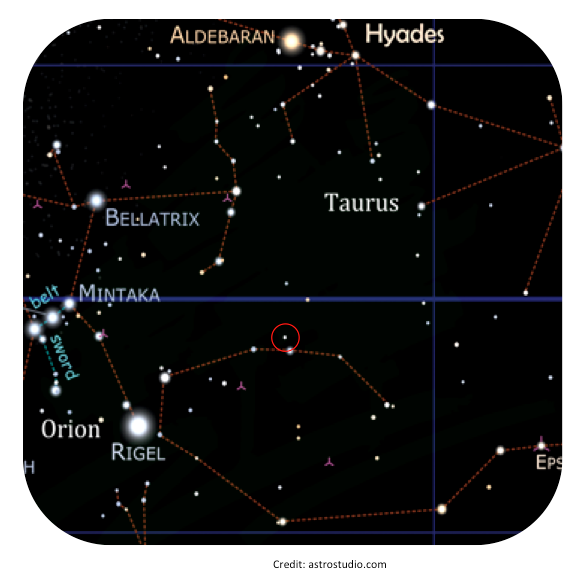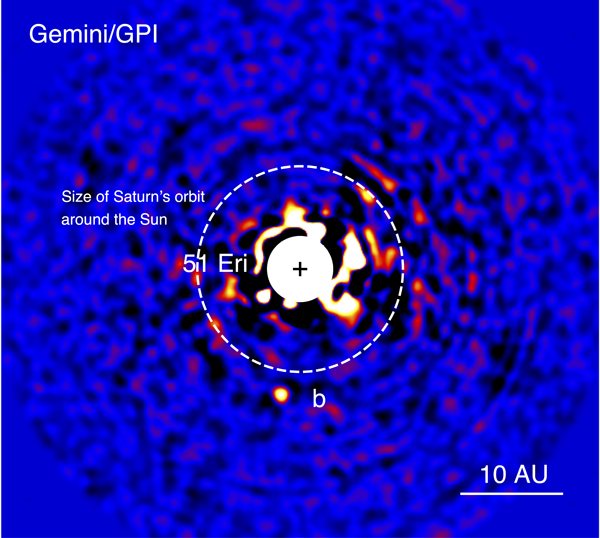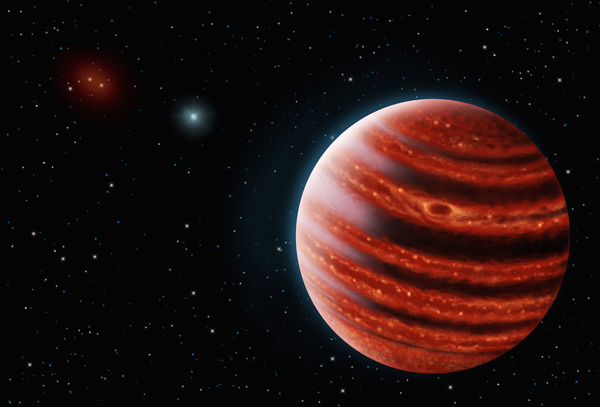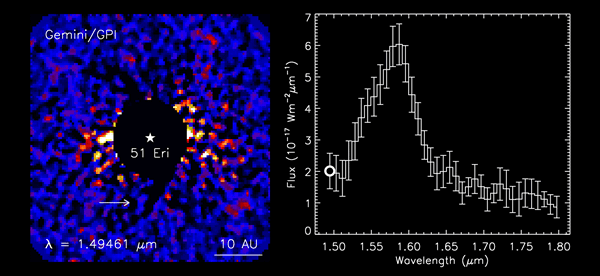Hi MagAO fans… this planet discovery did not actually use MagAO (too bad!), but it includes MagAO team members Kate Follette and Katie Morzinski, and MagAO user/operator/blogger Kim Ward-Duong, and MagAO users Jenny Patience and Abhi Rajan, as well as involving our favorite technique of Extreme Exoplanet AO… so we thought you might be interested to hear about the first new planet discovered by the Gemini Planet Imager (GPI)!
Gemini is our neighboring telescope to the South on Cerro Pachon, and the Gemini Planet Imager has been mentioned on the MagAO blog before. The GPI Exoplanet Survey is a large program to look for new planets around young stars. It uses an extreme AO system with a MEMS deformable mirror to correct high-order turbulence, a specialized coronagraph to block out the light of the central star, and an integral field spectrograph to break the light into a rainbow of colors at each point in the image plane, in the 1-2 micron regime. See this blog post for more on how GPI works to see planets.
Today the Science article came out announcing the discovery of GPI’s first new planet, 51 Eri b, by Bruce Macintosh, James Graham, and the rest of the GPI/GPIES team. (ArXiv version.) Please see the press release for the full story! Here is a brief taste in pictures:
The 51 Eridani system consists of a ~20-Myr-old F-type star with a ~2000-AU-away distant pair of M dwarfs at ~6 AU from each other.
Here is a picture of the star in the sky, by Franck Marchis and Sarah Blunt — it is about 30 pc (almost 100 light years) away:

And a fly-by simulation of the system by Jenny Patience and James Cornelison:
Simulated fly-by of the 51 Eridani star and planet system from Franck Marchis on Vimeo.
Closer in to the star GPI found a planet at 13 AU — which would be a little bit outside the orbit of Saturn in our Solar System. Here is the discovery image, by Julien Rameau and Christian Marois:

Here is an artist’s conception of the system, as seen from near the planet, by Danielle Futselaar and Franck Marchis:

An integral part of GPI (haha…) is the Integral Field Spectrograph that takes a little spectrum of every point in the image. This way, we can discover the planet, as well as measure its properties like its temperature, at the same time. Check this movie out which shows the brightness of the planet at each wavelength, in two different ways of looking at it, by Robert De Rosa and Christian Marois: (It’s an animated gif… I hope it works on your browser/device.)

Well, as I said above, please see the paper (ArXiv version) and the press release for the full story. Thanks for reading. We’re so excited for GPI’s first planet, and we can’t wait to look at it with MagAO!